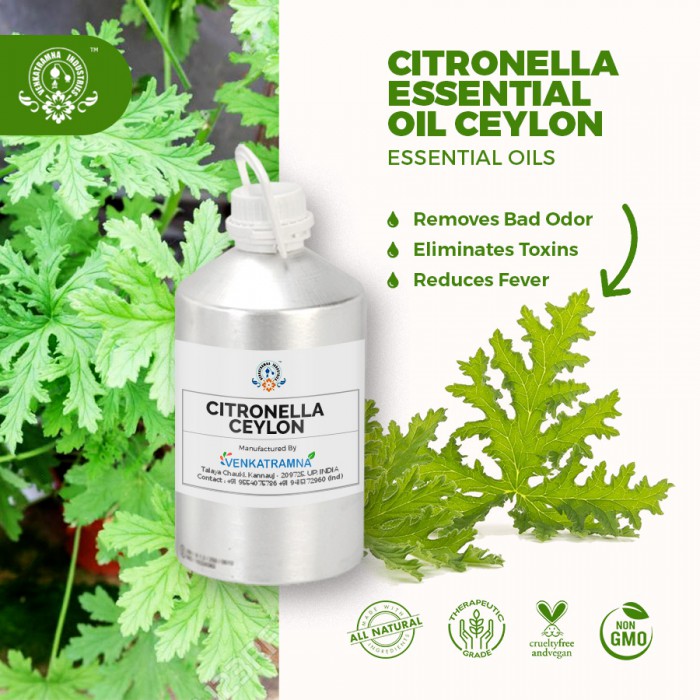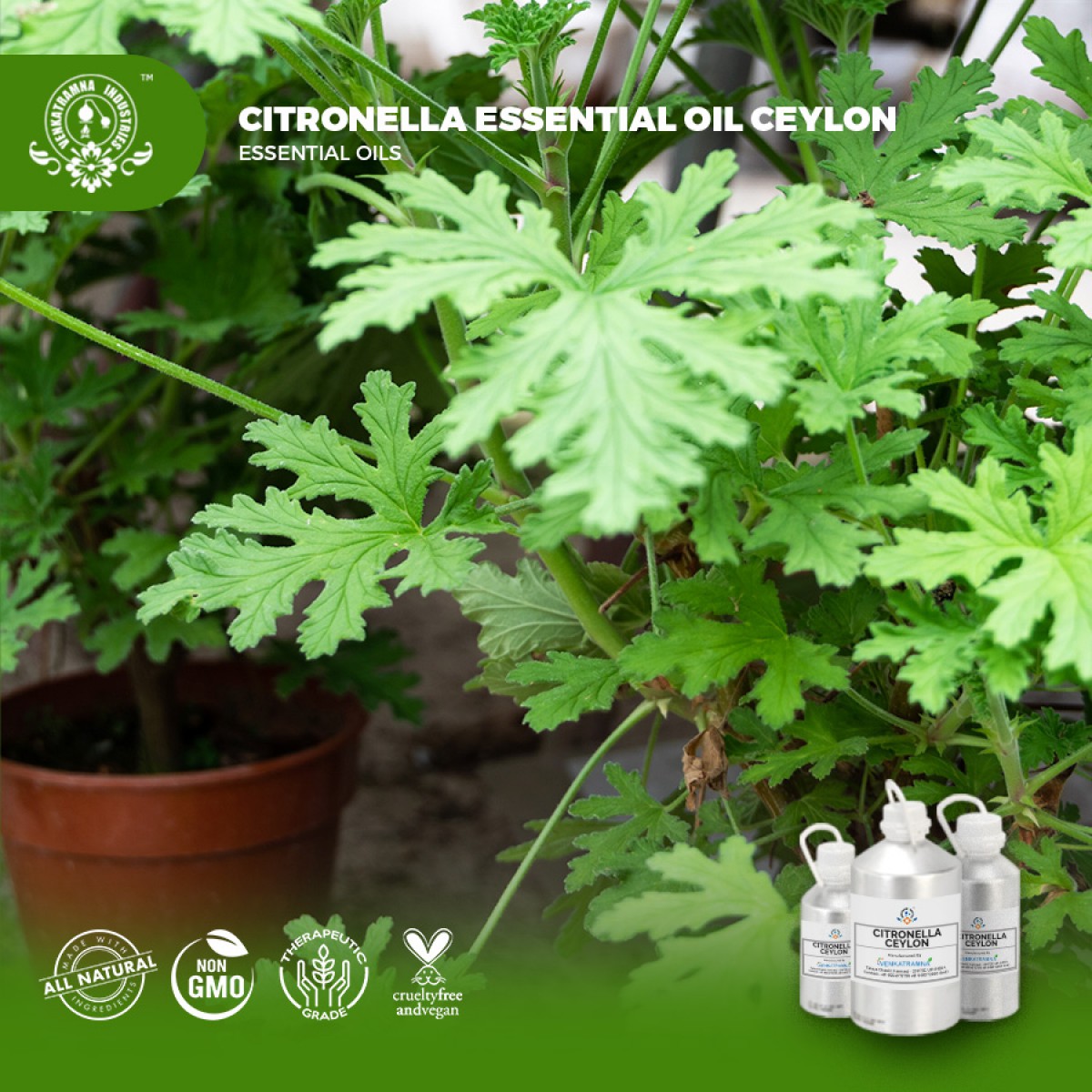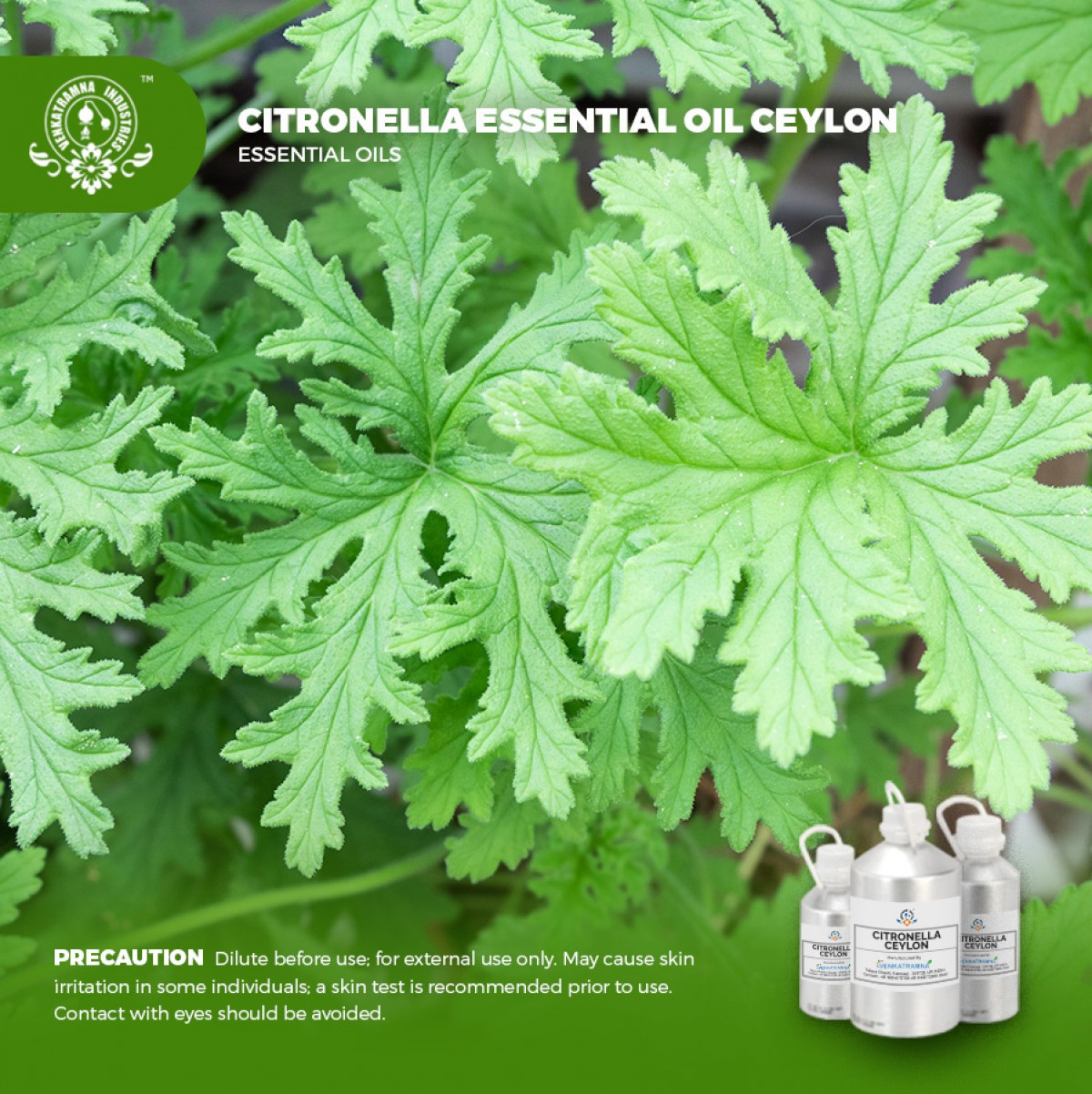Botanical Name: Cymbopogon nardus L. (Andropogon nardus L) Common name: Ceylon, c Read More
|
Botanical Name: |
Cymbopogon nardus
L. (Andropogon nardus L) |
|
Common name: |
Ceylon, citronella, citronella grass, geranium grass,
nardus grass |
|
Plant family: |
Poaceae |
|
Genus: |
Cymbopogon |
|
Appearance/Color: |
A clear light yellow to brownish liquid |
|
Odor: |
A top note of medium aroma, citronella has a well-rounded lemony
scent, through it is much softer and has subtle wood tones. |
|
Blends With: |
Bergamot, orange, cedarwood, geranium, lemon, lavender
and pine. |
|
Origin |
Sri Lanka |
The genus Cymbopogon belongs to
the family Poaceae, which is widely distributed in the tropical and subtropical
regions of Africa, Asia, and America. This genus is famous for its high content
of essential oils, which have been used for cosmetics, pharmaceutics, and
perfumery applications. Cymbopogon nardus (L.) Rendle, popularly known
as citronella, native to Ceylon is one of the Cymbopogon species. The essential
oil obtained from the leaves of Cymbopogon nardus is commonly used as an
insect repellent. Many Studies have shown the antiviral, antibacterial, and
antifungal activities of this oil. Furthermore, a higher cytotoxic activity of
Cymbopogon nardus L. essential oils on human epidermic cell line HaCaT was
demonstrated. Thus, the essential oil of Cymbopogon nardus could be quite
suitable as an active component in pharmaceutical formulations for skin
treatment and its damages repairing. Moreover, Cymbopogon essential oil can be
used for the control of foodborne pathogenic bacteria in the food industry.
Citronella oil comes from the Asian grass plant known as Cymbopogon nardus. It’s most commonly used as a natural fragrant oil, in insect repellents, as well as in beauty, household and perfume products. According to dozens of clinical studies, pure citronella oil is an antiseptic, antimicrobial and antifungal treatment. The most popular use for citronella is as a constituent in homemade or commercially sold insect repellents, since it naturally repels mosquitos and other bugs. The U.S. Environmental Protection Agency considers citronella to be a “biopesticide” that has a nontoxic mode of action against insects.
DISCLAIMER
The complete range of conditions
or methods of use are beyond our control therefore we do not assume any
responsibility and expressly disclaim any liability for any use of this
product. Information contained herein is believed to be true and accurate however,
all statements or suggestions are made without warranty, expressed or implied,
regarding accuracy of the information, the hazards connected with the use of
the material or the results to be obtained from the use thereof. Compliance
with all applicable federal, state, and local laws and local regulations
remains the responsibility of the user.
The FDA has not evaluated the
statements on this website. No claims are made by Venkatramna Industries as to
the medicinal value of any products from vriaroma.com or by us. The information
presented here is for educating our customers about the traditional uses of
essential oils and is not intended to diagnose, treat, cure, or prevent any
disease. You are responsible for understanding the safe application of these products.
If you have any questions, please call or email us for further information.
As per NAHA guidelines, New Directions Aromatics
(NDA) does not recommend the ingestion of essential oils. It is imperative to
consult a medical practitioner before using Essential Oils for therapeutic
purposes. Pregnant and nursing women and those taking prescription drugs are
especially advised not to use this product without the medical advice of a
physician. The oil should always be stored in an area that is inaccessible to
children, especially those under the age of 7.
Cymbopogon nardus (C. nardus) (L) Rendle, a Poaceae is a medicinal
plant widely used as culinary and for perfemury. The Chinese use the leaves
more specifically for rheumatism and other uses in the treatment of fever,
intestinal parasites, digestive and menstrual problems. C. nardus produced a yellow essential oil which
present some pharmacological properties as antifungal, repellent against
mosquito.
Citronella Oil in Pharma
Cymbopogon nardus
is a local
medicinal plant,
traditionally used for
post-partum bath. Scientific studies have proven C. nardus to possess several biological
activities, such as antiviral, antibacterial and insect repellent. Essential
oils are known to possess antibacterial activity, which has been evaluated
mainly in liquid medium. The essential oil extracted from
tulsi leaves contains
eugenol, a phenolic compound
which may be
attributed to its antimicrobial, antidiabetic, and
anticancer properties.
Essence of Citronella Oil
C. nardus is the
source of citronella oil, used in perfumery and as an insect repellent.
Inexpensive soaps sold in Asian markets are scented with citronella oil.
Citronella oil can be mixed with other vegetable oils and used in massage or
rubbed on the skin for an insect repellent. Citronella candles and incense,
however, are less effective.
Practitioners claim citronella
oil is a stimulant when inhaled or rubbed on the skin, and an antiseptic that
can be used to sterilize food preparation surfaces. It is also used in Chinese
medicine and traditional medicine for the treatment of rheumatism, digestive
problems, fever and intestinal problems, and in aromatherapy to treat colds,
flu and headaches
COMMON USAGE
·
Anti-inflammatory properties
·
Remove bad odor
·
Eliminates toxins
·
Stimulates urination
·
Reduces fever
·
Inhibits fungal growth
·
Insects repellant
·
Prevents stomach disorders
·
Stimulant
Ingredients:
|
S.No |
Key Constituents |
Strength (%) |
|
1 |
Citronellal |
24.8-52.8 |
|
2 |
Geraniol |
21.1-28.5 |
|
3 |
()-citronellol |
8.9-12.5 |
|
4 |
Elemol |
2.2-5.16 |
|
5 |
(P)-limonene |
02.4-4.5 |
|
6 |
Geranyl acetate |
2.8-4.1 |
|
7 |
b-Elemene |
1.8-3.1 |
|
8 |
Eugenol |
1.2-2.4 |
|
9 |
g-cadinene |
1.17-2.3 |
|
10 |
Citronellyl acetate |
02.10-2.0 |
|
11 |
T-amorphol |
0.8-1.5 |
|
12 |
d-cadinene |
0.4-1.3 |
|
13 |
Linalool |
0.4-1.2 |
|
14 |
Methyl-eugenol |
0-0.011 |
TOXICOLOGICAL
INFORMATION
Safety Summary
·
Hazardous: Not Known
·
Contraindications Not Known
Organ Specific Effects
·
Adverse skin reactions No Additional Data
available.
·
Reproductive toxicity No Data Available
Systemic Effects
·
Skin corrosion/irritation: May be irritating to
skin.
·
Serious eye damage/irritation: May be irritating
to eyes. Prompt rinsing and removal of the substance will avoid damage.
·
Respiratory sensitization: May cause irritation.
·
Reproductive toxicity: Not specified
·
STOT-single exposure: Not specified
·
STOT-related exposure: Not specified
ECOLOGICAL
INFORMATION
·
Toxic
to aquatic organisms, may cause long term adverse effects in the aquatic
environment.
·
Results of PBT and vPvB assessment
o
PBT: Not applicable.
o
vPvB: Not applicable.
·
Persistence and degradability No further
relevant information available.
·
Bio-accumulative potential No further relevant
information available.
·
Mobility in soil No further relevant information
available.





 MSDS-Citronella.pdf
MSDS-Citronella.pdf




